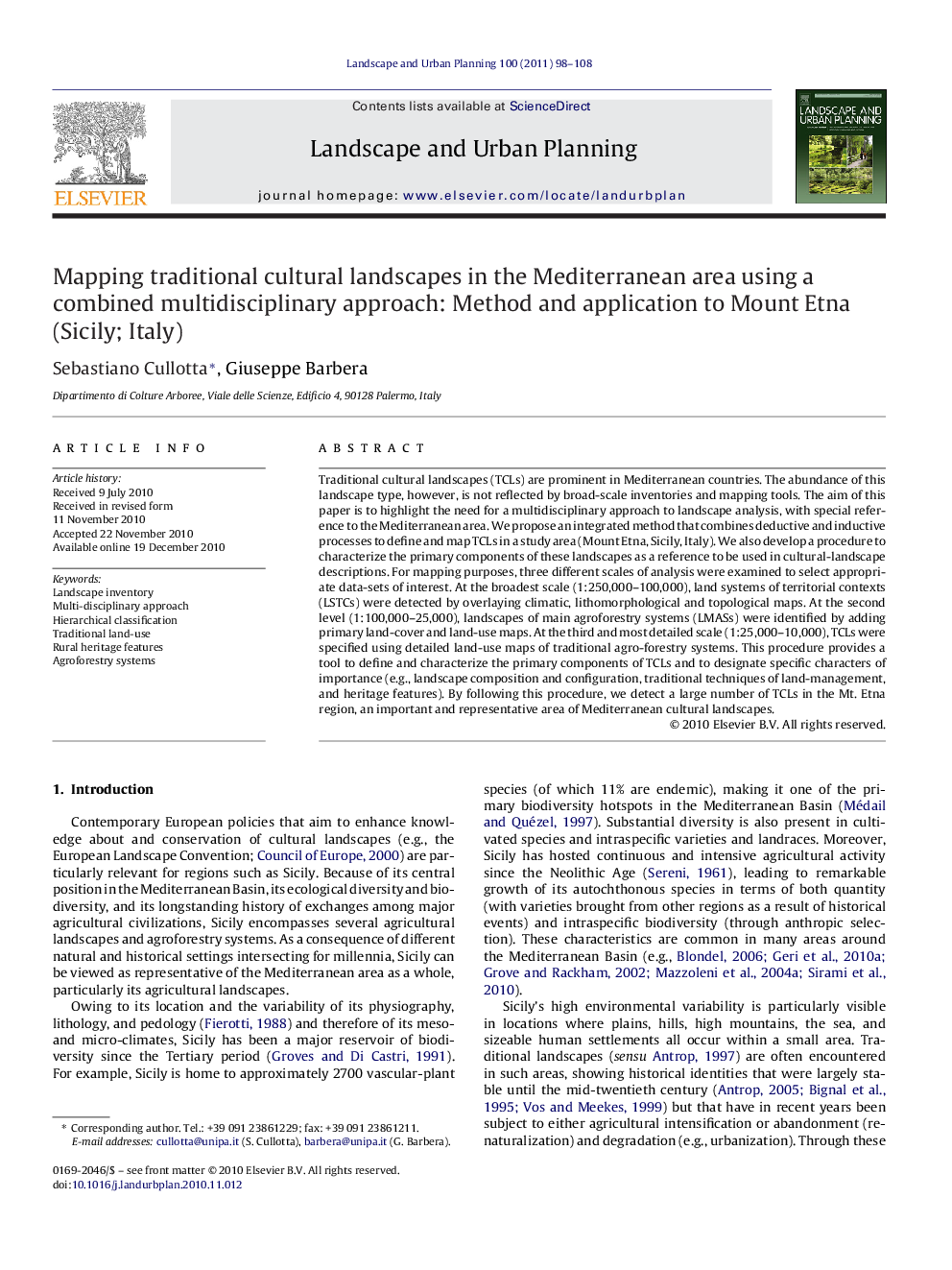| کد مقاله | کد نشریه | سال انتشار | مقاله انگلیسی | نسخه تمام متن |
|---|---|---|---|---|
| 1049960 | 1484654 | 2011 | 11 صفحه PDF | دانلود رایگان |

Traditional cultural landscapes (TCLs) are prominent in Mediterranean countries. The abundance of this landscape type, however, is not reflected by broad-scale inventories and mapping tools. The aim of this paper is to highlight the need for a multidisciplinary approach to landscape analysis, with special reference to the Mediterranean area. We propose an integrated method that combines deductive and inductive processes to define and map TCLs in a study area (Mount Etna, Sicily, Italy). We also develop a procedure to characterize the primary components of these landscapes as a reference to be used in cultural-landscape descriptions. For mapping purposes, three different scales of analysis were examined to select appropriate data-sets of interest. At the broadest scale (1:250,000–100,000), land systems of territorial contexts (LSTCs) were detected by overlaying climatic, lithomorphological and topological maps. At the second level (1:100,000–25,000), landscapes of main agroforestry systems (LMASs) were identified by adding primary land-cover and land-use maps. At the third and most detailed scale (1:25,000–10,000), TCLs were specified using detailed land-use maps of traditional agro-forestry systems. This procedure provides a tool to define and characterize the primary components of TCLs and to designate specific characters of importance (e.g., landscape composition and configuration, traditional techniques of land-management, and heritage features). By following this procedure, we detect a large number of TCLs in the Mt. Etna region, an important and representative area of Mediterranean cultural landscapes.
Research highlights▶ An uniform methodology for traditional landscape inventory and description is currently absent. ▶ A multidisciplinary and standardized procedure for landscape analysis is identified. ▶ Sicily (Italy) includes several traditional agricultural landscapes and agroforestry systems.▶ It can be considered representative of the wide environmental–cultural Mediterranean scenario.
Journal: Landscape and Urban Planning - Volume 100, Issues 1–2, 30 March 2011, Pages 98–108